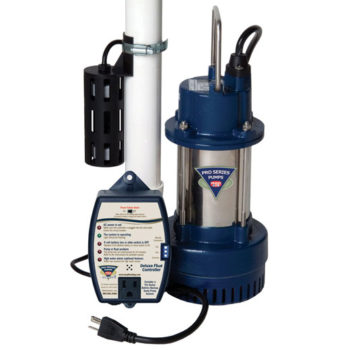Sump Pump Services
Sump Pump Services St. Louis
Keep Your Home or Business Dry with Expert Sump Pump Solutions
A dry property is a safe property. At Bieg Plumbing & Mechanical, we provide professional sump pump services such as installation, replacement, repair, and maintenance in St. Louis to protect your home or business from costly water damage.
Sump pumps are designed to remove excess groundwater before it can seep into your basement or crawl space. Unlike sewage pumps, sump pumps handle groundwater or gray water from laundry sinks, keeping your foundation and valuables safe from flooding.
How a Sump Pump Works
A sump pump is typically located in the lowest level of a home or business, inside a sump pit. As water collects in the pit, the pump activates and transfers the water safely away from the property and foundation. Proper installation ensures your sump pump operates reliably when you need it most.
Common Types of Sump Pumps
We install and maintain all types of sump pumps, including:
-
Submersible Sump Pumps – Installed underwater inside the sump pit, offering quiet operation and efficient pumping.
-
Pedestal Sump Pumps – A non-submersible design with easy access for repairs, but must be securely installed to avoid failure.
-
Battery-Backup Sump Pumps – A rechargeable battery system that keeps your pump working during power outages, ideal for storm-prone areas.
-
Water-Powered Sump Pumps – Operates without electricity or batteries by using municipal water pressure. (Note: not permitted in many local codes.)

Common Sump Pump Problems
Even the best sump pump systems can fail if not properly maintained. Some of the most frequent issues include:
-
Broken or stuck float switch
-
Pump overwhelmed by high water volume
-
Clogged intake screen
-
Electrical power failure
-
Incorrect installation
-
Lack of annual maintenance
Why Choose Bieg Plumbing & Mechanical for Sump Pump Services?
Don’t wait until flooding damages your home or office. Schedule preventive service today. Our licensed plumbers offer:
-
Professional sump pump installation
-
Routine performance testing and maintenance
-
Emergency sump pump repairs
-
Battery-backup and replacement options
-
Over 60 years of trusted plumbing experience in St. Louis
Protect your basement, foundation, and valuables with sump pump services from Bieg Plumbing & Mechanical.
Call (314) 487-4564 today to schedule sump pump repair, installation, or testing in St. Louis.
Frequently Asked Questions About Sump Pumps
How long does a sump pump last?
Most sump pumps last between 7–10 years with proper maintenance. Regular inspections and testing can help extend their lifespan.
Do I need a battery-backup system for my sump pump?
Yes, if you live in an area with frequent storms or power outages. A battery-backup pump ensures your system works when your main pump loses power.
How often should I test my sump pump?
It’s recommended to test your sump pump at least once a year, ideally before the rainy season, to ensure it will operate correctly when needed.
What size sump pump do I need?
The size depends on your home’s square footage, groundwater levels, and local rainfall. Our team can assess your property and recommend the right pump.
Can I install a sump pump myself?
While DIY installation is possible, improper setup can lead to pump failure, water damage, or code violations. Professional installation ensures reliability and compliance.

